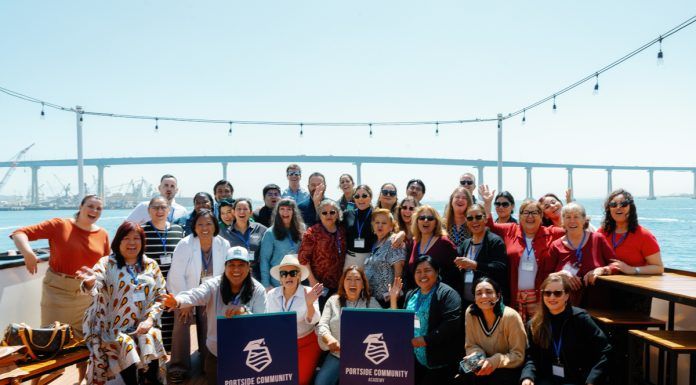San Diego County Undersheriff Kelly Martinez, who started with the agency as a deputy sheriff in 1985, is running for sheriff.
“I have three priorities both as undersheriff and if I am elected: first, we need a ton more staff and need to get more people hired and trained. Second, we need to make huge investments in our jails. Third, we need to address public safety, the ghost gun issue—we recovered a ghost gun off a 15-year old who committed a robbery. That’s a problem when criminals have unserialized weapons,” Martinez said.
Martinez, 59, is endorsed by Congressman Juan Vargas and California Senate President pro tempore Toni Atkins, County Supervisors Nathan Fletcher, and Nora Vargas among others.
She received about $117,000 in campaign contributions during 2021 and another $56,000 in the first third of 2022, the majority of which came from real estate professionals. A few stand out: a $500 donation from Chula Vista Police Patrol Operations Division Commander Phil Collum, a $500 donation from Deputy District Attorney Jim Koerber.
According to the state auditor, San Diego County jails had one of the highest death rates in the state from 2006 through 2020.
“The high rate of deaths in San Diego County’s jails compared to other counties raises concerns about underlying systemic issues with the Sheriff’s Department’s policies and practices,” Tilden wrote in a report released earlier this February.
Martinez, who stepped into her role as undersheriff last year said doing so “gave me authority to run day-to-day operations” and believes she has already established a track record of increasing transparency.
“We’ve changed a number of things: we’re putting a lot more information in public releases, conducting family notifications by a liaison trained in counseling, expanding that to include more follow up from family as time goes by,” Martinez said, a pattern she would like to continue pursuing if elected.
In the future, Martinez said she would like to see a revamped section on the Sheriff’s website that would include a progress report and graphics for increased public transparency with visually digestible, easy-to-understand information.
It was Martinez who signed a Memorandum of Understanding with the Citizens Law Enforcement Review Board on Feb. 14 to include trained CLERB representatives at in-custody and deputy-involved shooting cases where death occurs, or is likely.
“This will increase transparency and build trust in the community. To give the CLERB office access right at the scene helps them with increased access to information they can use for investigations,” Martinez said at the time.
She was also involved with an April 13 MOU between District Attorney Summer Stephan, City of San Diego police department and Chula Vista Police department. Under the new policy, no agency in the San Diego region will investigate its own officer-involved shooting or in-custody use of force incidents.
“One thing we need to do is— I hate to say public relations but increase the number of folks we have working on outreach,” Martinez said.
For example, she said, information about a Poway teen who recently went missing spread very quickly and although many volunteers stepped up to help, the department “couldn’t keep in front of it” because it was so focused on the operations side. The incident highlighted a need to enhance public communication efforts.
“I think we can do better in that area, honestly. Past PIOs became too reliant upon email. Conversations over the phone or meeting in person would be helpful, especially when you do have those hard conversations,” Martinez said.
The sheriff is making a lot of strides with immigrant communities, she said, such as deliberately working on outreach in Somali communities and creating a Spanish-language academy where residents can learn how law enforcement works with traffic and domestic violence.
However, she believes the sheriff could also prevent and deter hate crimes, such as a recent racially-motivated stabbing incident that occurred in Lakeside by addressing divisions in society, actively pursuing uncomfortable conversations to stave off additional incidents. The situation in Lakeside involved a couple of teenagers, she said, but there is potential to reshape the narrative with younger residents.
“We’ve spotlighted several of our Black department members and some of them came from communities where they were distrustful of law enforcement,” Martinez said, but she believes the Sheriff’s department can develop a positive relationship with communities of color and underserved communities.
Although she gives credit to Gore for initially developing the LGBTQ+ Advisory Council over 14 years ago, Martinez recently put out a call for more volunteers, but was surprised at how many individuals “didn’t know their department was so open to receiving them” and would consider growing the council to include rotating liaisons.
On the other hand, she takes credit for developing the Homeless Assistance Resource Team in 2018 after recognizing deputies were responding to homeless calls as a collateral duty. She said she “formed a team with the deputies and the sergeant to integrate with non-governmental agencies” in an effort to focus on housing instead of arrests.
Just as she differentiates between unique needs among unsheltered residents, she also notes students on campuses across the county, have different needs.
She believes Campus Resource Officers need to understand potential threats but also understand different kids need different types of interaction.
“The younger generation sees things differently. I grew up in a very different San Diego county than the one I live in today,” Martinez said.


![Kelly Martinez for Sheriff[1]](https://www.thestarnews.com/wp-content/uploads/2022/05/Kelly-Martinez-for-Sheriff1-696x696.jpg)












